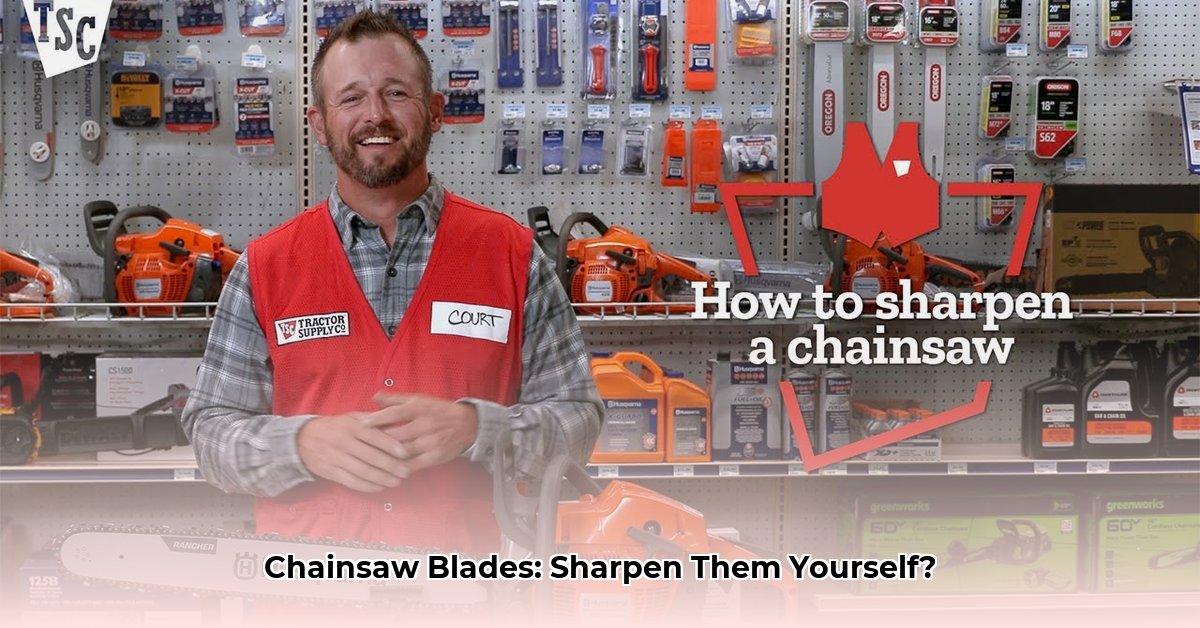
A dull chainsaw chain is dangerous and inefficient. While Tractor Supply doesn't offer sharpening services, sharpening your chain yourself is surprisingly straightforward. For more information on chainsaw chains, check out this helpful resource: Chainsaw Chain Info. This guide provides step-by-step instructions for both hand filing and using an electric sharpener, ensuring a safer and more efficient cutting experience.
Why Sharpen Your Chainsaw Chain?
A sharp chainsaw chain is essential for safety and efficiency. A dull chain increases the risk of kickback—a dangerous situation where the saw suddenly recoils—and makes cutting significantly harder. It also puts extra strain on your chainsaw, shortening its lifespan. Regular sharpening is preventative maintenance, keeping your saw running smoothly and extending its life. Did you know that a sharp chain can increase cutting speed by up to 25%?
Choosing Your Sharpening Method: Hand File vs. Electric Sharpener
You have two primary options: manual sharpening with a file or using an electric sharpener.
1. Hand Filing: The Manual Method
Hand filing is the most affordable option, requiring only a round file (matched to your chain's pitch), a flat file for depth gauge adjustment, and a vise or clamp. However, it's more time-consuming and requires practice to achieve consistent results. This method offers a greater level of control and is ideal for occasional use making it a good choice for casual users.
Step-by-Step Hand Filing Guide:
Safety First: Wear safety glasses, gloves, and work in a well-ventilated area. Securely clamp the chainsaw bar in a vise.
Clean the Chain: Remove sawdust and debris with a brush.
File Each Tooth: Using the round file at the correct angle (check your chainsaw's manual for the precise angle, typically around 30 degrees), file each cutter tooth. Aim for 5-7 smooth, consistent strokes per tooth.
Adjust Depth Gauges: Use the flat file to adjust the depth gauges, maintaining the recommended height (usually 0.025 to 0.030 inches). This ensures the correct depth of cut, preventing binding and kickback.
Test and Refine: After sharpening, test the chain's sharpness. If needed, repeat steps 3 and 4 until all teeth are evenly sharpened.
2. Electric Sharpeners: Speed and Precision
Electric sharpeners are a faster and often more consistent option, but they represent a higher initial investment. They provide excellent speed and consistency, making them a better choice for frequent users. However, even electric sharpeners initially have a learning curve.
Advantages and Disadvantages Comparison:
| Feature | Hand Filing | Electric Sharpener |
|---|---|---|
| Cost | Low | High |
| Speed | Slow | Fast |
| Consistency | Requires practice, can be inconsistent | Generally more consistent |
| Skill Required | Moderate to high | Low to Moderate |
| Portability | High (only needs a clamp/vise) | Low (requires power source) |
Safety Precautions for Chainsaw Sharpening
Regardless of your chosen method, prioritize safety:
- Wear safety glasses and gloves.
- Work in a well-ventilated area.
- Securely clamp the chainsaw bar.
- Refer to your chainsaw's manufacturer's instructions for specific safety guidelines. Ignoring instructions can lead to injury.
Conclusion: Maintain Your Chainsaw for Optimal Performance
Although Tractor Supply may not offer sharpening, you can easily do it yourself. Sharpening your chainsaw regularly improves efficiency, reduces the risk of kickback, and extends the lifespan of your saw. Choose the method that best fits your needs and budget to maintain peak performance and safety. Remember, a sharp chain is a safe chain!